Well, as expected, the buzz is starting. With Ron Howard’s “The Da Vinci Code” film scheduled to hit theaters May 19, many opposing groups are beginning to brace themselves in, as they call it, “preparation” for the film. This includes everything from composing answers to the inevitable questions that Dan Brown’s remarkable book presents to full-blown organized protests and proposed boycotts of the movie itself.
It will be endlessly amusing to see all the opinions voiced against “The Da Vinci Code” in the weeks and months to come as the story hits the film-going mainstream, particularly by people who never read the book and subsequently refuse to see the film for the same reason. This is no different than the opposition we saw a couple years ago upon the release of Mel Gibson’s “The Passion of the Christ”, when many groups voiced hateful opinions on the film without seeing it for themselves, proposing similar boycotts. Going back even further than that, recall the protests surrounding Martin Scorsese’s “The Last Temptation of Christ” in 1988, which was essentially driven by the same type of energies seen here with the DVC and Passion. The point here is that every human on the planet is capable of pathetic narrow-mindedness.
I think Martin Scorsese said it best in his defense of “The Passion of the Christ” in 2004, which ironically was being protested by the same group of people who supported his own controversial “Last Temptation of Christ” (which, ironically enough, was in turn boycotted by the same group of people that supported the said “Passion”). To these people he said: “Shut up and make your own movie.”
Amen.
Note that there’s nothing wrong with criticism. Critical thinking and the questioning of authority is what America was founded upon. We all have the right, and should be encouraged, to criticise things. It’s what keeps things in check. Without this balancing of ideas, we’d all live in a one-dimensional society void of individuality, free thought, and art.
But there’s a critical difference (sorry) between fairly criticising a piece of work and proposing that the work’s creator’s freedom of expression (and the freedom of others to receive it) be banned in order to protect the inherent emotional and psychological insecurities of the protesting party.
Like somebody once said, shut up and do your own thing. Then talk.
OK, enough of the rant. Let’s move on to Dan Brown’s “The Da Vinci Code” itself, which I read over a weekend back in 2004. This incredible novel was nearly impossible to put down, and tickles the funny bone of any person who enjoys the art of storytelling in written form.
I’d like to revisit a postmortem discussion I had with fellow DVC readers regarding the book itself, and the Epilogue in particular. I’ve discussed this with several people individually, so it’s time to blog some of these thoughts for permanent record.
*WARNING: SPOILERS BELOW*
To review, from my own comprehension of the book,
Without getting specifically into the symbols themselves, recall that the chalice, or Grail, is commonly thought of as the cup that Christ drank from. It’s the cup that was supposedly passed around to all the boys during the first communion. It’s also the cup that caught the blood during the crucifixion. “The chalice that carried Christ’s blood.”
What we learn from Grandpa here is that the chalice, or the Holy Grail, is actually more of a figurative concept. A metaphor. It’s not the physical cup itself. It all points to Mary Magdalene, who is the figurative chalice, or womb, that carries Christ’s blood, or bloodline. Mary Magdalene, in a certain specific sense, was the “chalice” that housed Christ’s offspring. Her womb. The sacred feminine. The Holy Grail.
As the story unfolds, particularly at the end, Langdon and Sophie realize that they’re not looking so much for the location of the Grail, but the identity of the Grail. Right? “It’s not a question of where it is, but of what it is.” etc.
Recall the end, when Landon’s talking to Grandma. Grandma tells him that he’ll know what the Grail is “when it dawns on him.” It so follows that the author is telling the reader that we will know what the Grail is “when it dawns on us.” In other words, it’s been implied throughout the story, and it’s up to us to pick it up.
THE HOLY GRAIL IS SOPHIE!!!
That’s the whole point. That’s what makes it so cool. A great mystery thriller. A “search for the Holy Grail” if you will. How startling and utterly satisfying it was to learn that Sophie, with Langdon by her side, was effectively searching for herself.
It so follows, through implication (i.e. “It’s a date.”), that Langdon could eventually father descendants of Christ via Sophie. (How’s that for blasphemy?)
Remember that Sophie’s family comes from the House of Benjamin, the bloodline of which Magdalene was a member. Jesus came from the House of David. In a general sense, the Holy Grail is the sacred feminine that carries Christ’s bloodline. In a specific sense, that was Mary Magdalene some 2000 years ago.
Today, not much has changed. In a general sense, the Holy Grail is the sacred feminine that carries Christ’s bloodline. But in a more specific sense, today, that would be the sole surviving child-bearing female from that bloodline. That woman is Sophie. In the story, Brown discusses how Sophie and her brother are the sole survivors of the bloodline, so to speak. It so follows that Sophie, being the final female in the bloodline, represents the figurative concept of the Grail.
Recall that the whole struggle here was due to the Church’s breached agreement with the Priory. Recall that the Church mutually agreed with the Priory that the Priory would reveal the Truth “when the time was right”. It was agreed upon that that “right time” would be the end of the Pisces Era and the beginning of Aquarius. The end of the 20th Century marked that transition. “The End of Days”, or “The End Of The Fish Era”.
The Church backed out at the last minute. The End of Days came and went, and yet the Priory had still not divulged the info that generations of knights and geniuses had protected for this big day. Why didn’t the Priory divulge?
Because the Church threatened Grandpa with harming Sophie. This, of course, was beyond anything the Grandfather could allow, no matter what the cost. I mean, hey, she’s the Holy Grail, and must be protected at all costs.
That said, I found the Epilogue unnecessary. It almost felt like some sort of afterthought, perhaps even imposed by the publisher for fear of readers not picking up the implied twist to the story. It attempted to spell things out for us at the end, which in my opinion was a bad move. The story really should have ended with Sophie replying, “It’s a date.” Done. Lose the Epilogue.
In the Epilogue, Langdon finds himself back in Paris several weeks after the true conclusion of the story. He wakes from an afternoon nap, and then rushes down to the inverted pyramid outside the Louvre. Apparently it has suddenly dawned on him where (and what) the Holy Grail is; the Grail is the remains of Magdalene, which Langdon deduces to be buried eternally at that location. He falls to his knees in realization. Everything about the Grail instantly becomes literal.
The problem with the Epilogue is that it has cheaply reduced the “secret of the Grail” to be one of whereabouts of, rather than identity of. This completely contradicts Grandma’s statement to Langdon in the story’s final act, where she’s basically telling Langdon — in not so many words — that the Grail is ironically the woman he’s been searching for it with. Sophie. This Epilogue is nothing short of anticlimactic to readers who have been paying attention throughout the story, striking me as an afterthought external to Brown’s masterfully woven brainchild, dumbing everything down, effectively undoing what he accomplished beautifully in the story’s climax. Can you imagine if, in “The Sixth Sense”, after Bruce Willis realizes he’s dead, they end the film with a scene of Haley Joel waking up to realize it had all been just a dream? Same thing.
Take the DVC’s Epilogue out of the book, and the story still holds its own. Even moreso. The implied conclusion is that “The Holy Grail” is a figurative concept; it embodies in the idea of “the sacred feminine”. The Grail is the perpetual womb that has carried Christ’s bloodline through the ages, not the physical remains of Magdalene herself. Sure, Magdalene was the Grail in her time. As ages passed, and additional generations followed, there were daughters and granddaughters that assumed the role of carrying the bloodline on. The sacred feminine. The Holy Grail. Sophie.

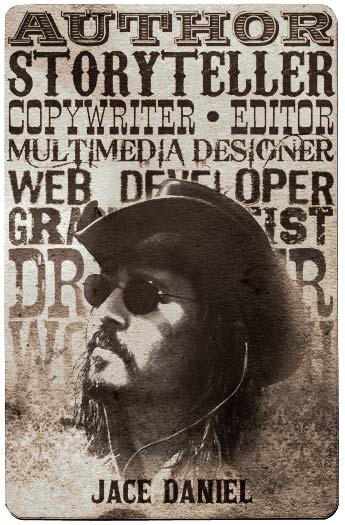



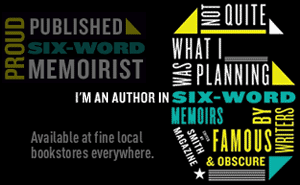
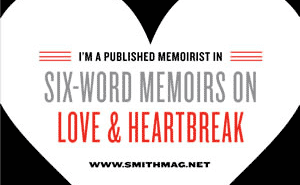

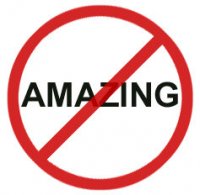


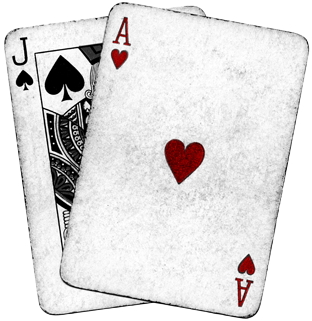
did you hear about the london judge embedding an encrypted message in the ruling of the dan brown trial there?
http://www.nytimes.com/2006/04/27/books/27code.html
I did. Classic.
I just learned that he applied the Fibonacci Sequence in the encryption.
freedom of expression, blah blah blah… how come most of the loudest proudest proclaimers of the primacy of freedom of expression are silent when it comes to a handful of cartoonists currently under police protection and/or hiding for their lives on the basis of a few mostly-inane political cartoons? like when george clooney, whose work i otherwise enjoy, talks about how “courageous” he and his pals are for making “daring” films in 2005 like the one about mccarthyism (!), or that other one where “big oil” is the bad guy… wow, you’d think that in the current “threat environment”, these guys could rouse themselves to at a minimum comment on or come to the defense of their fellow artists, like that van gogh fellow who ended up butchered and full of bullets on the street in denmark b/c of the 10 minute film he made. the academy couldn’t even bring itself to mention him, much less show a photo, in its annual roll of the deceased during the academy awards.
most of the time, when people start braying about freedom of expression, it’s bollocks. “freedumb of expression” is more appropriate in such cases.
as for the DVC movie, i haven’t read the book and probably won’t. not because of any principle; more just because i don’t have the time. i don’t get out to see many films anymore either, so i’m on the fence whether i check out the mulleted tom hanks in this one. i’ll hand it to ron howard and tom hanks: they do know how to create good filmed entertainment, so it’ll surely be worth seeing in some form. my in-theatre experiences tend more towards the “spectacle” films, though; i can see a “story pic” drama on dvd and be as entertained as otherwise.
now, about United93… there’s one i’m planning to see in theatre. alone. not from a macabre voyeuristic thing, rather in an attempt to somehow connect better with it. i have friends who died in NYC that day, and my office-mate’s mum from my first post-law-school job was on the first flight. i hope the film will be worthwhile, although i imagine in any event it’ll be extremely difficult to watch straight-through without losing one’s composure.
as for the freedom of expression issue as it relates to the last temptation, or the passion of, or the DVC, it takes on an air of coordination, almost as if it’s factored into the promotional campaign.
funny how those with nothing to say (or even worse, all manner of apologies) about those cartoons were up on soapboxes in front of microphones and cameras when some folks complained about that whole “piss-christ” thing…
thus, the “bollocks” to all of it…
not that any of this necessarily has anything to do with DVC, i realize (belatedly)!